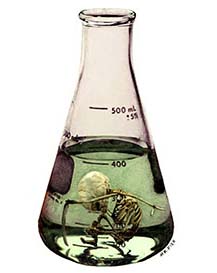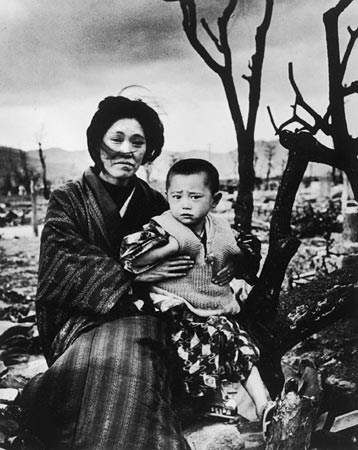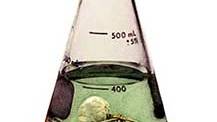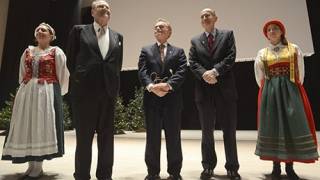The Science of Genocide
Source: truthdig.com
 On this day in 1945 the United States demonstrated that it was as morally bankrupt as the Nazi machine it had recently vanquished and the Soviet regime with which it was allied. Over Hiroshima, and three days later over Nagasaki, it exploded an atomic device that was the most efficient weapon of genocide in human history. The blast killed tens of thousands of men, women and children. It was an act of mass annihilation that was strategically and militarily indefensible. The Japanese had been on the verge of surrender. Hiroshima and Nagasaki had no military significance. It was a war crime for which no one was ever tried. The explosions, which marked the culmination of three centuries of physics, signaled the ascendancy of the technician and scientist as our most potent agents of death.
On this day in 1945 the United States demonstrated that it was as morally bankrupt as the Nazi machine it had recently vanquished and the Soviet regime with which it was allied. Over Hiroshima, and three days later over Nagasaki, it exploded an atomic device that was the most efficient weapon of genocide in human history. The blast killed tens of thousands of men, women and children. It was an act of mass annihilation that was strategically and militarily indefensible. The Japanese had been on the verge of surrender. Hiroshima and Nagasaki had no military significance. It was a war crime for which no one was ever tried. The explosions, which marked the culmination of three centuries of physics, signaled the ascendancy of the technician and scientist as our most potent agents of death.“In World War II Auschwitz and Hiroshima showed that progress through technology has escalated man’s destructive impulses into more precise and incredibly more devastating form,” Bruno Bettelheim said. “The concentration camps with their gas chambers, the first atomic bomb … confronted us with the stark reality of overwhelming death, not so much one’s own—this each of us has to face sooner or later, and however uneasily, most of us manage not to be overpowered by our fear of it—but the unnecessary and untimely death of millions. … Progress not only failed to preserve life but it deprived millions of their lives more effectively than had ever been possible before. Whether we choose to recognize it or not, after the second World War Auschwitz and Hiroshima became monuments to the incredible devastation man and technology together bring about.”
The atomic blasts, ignited in large part to send a message to the Soviet Union, were a reminder that science is morally neutral. Science and technology serve the ambitions of humankind. And few in the sciences look beyond the narrow tasks handed to them by corporations or government. They employ their dark arts, often blind to the consequences, to cement into place systems of security and surveillance, as well as systems of environmental destruction, that will result in collective enslavement and mass extermination. As we veer toward environmental collapse we will have to pit ourselves against many of these experts, scientists and technicians whose loyalty is to institutions that profit from exploitation and death.
Scientists and technicians in the United States over the last five decades built 70,000 nuclear weapons at a cost of $5.5 trillion. (The Soviet Union had a nuclear arsenal of similar capability.) By 1963, according to the Columbia University professor Seymour Melman, the United States could overkill the 140 principal cities in the Soviet Union more than 78 times. Yet we went on manufacturing nuclear warheads. And those who publicly questioned the rationality of the massive nuclear buildup, such as J. Robert Oppenheimer, who at the government lab at Los Alamos, N.M., had overseen the building of the two bombs used on Japan, often were zealously persecuted on suspicion of being communists or communist sympathizers. It was a war plan that called for a calculated act of enormous, criminal genocide. We built more and more bombs with the sole purpose of killing hundreds of millions of people. And those who built them, with few exceptions, never gave a thought to their suicidal creations.
“What are we to make of a civilization which has always regarded ethics as an essential part of human life [but] which has not been able to talk about the prospect of killing almost everyone except in prudential and game-theoretical terms?” Oppenheimer asked after World War II.
Max Born, the great German-British physicist and mathematician who was instrumental in the development of quantum mechanics, in his memoirs made it clear he disapproved of Oppenheimer and the other physicists who built the atomic bombs. “It is satisfying to have had such clever and efficient pupils,” Born wrote, “but I wish they had shown less cleverness and more wisdom.” Oppenheimer wrote his old teacher back. “Over the years, I have felt a certain disapproval on your part for much that I have done. This has always seemed to me quite natural, for it is a sentiment that I share.” But of course, by then, it was too late.
It was science, industry and technology that made possible the 20th century’s industrial killing. These forces magnified innate human barbarity. They served the immoral. And there are numerous scientists who continue to work in labs across the country on weapons systems that have the capacity to exterminate millions of human beings. Is this a “rational” enterprise? Is it moral? Does it advance the human species? Does it protect life?
For many of us, science has supplanted religion. We harbor a naive faith in the godlike power of science. Since scientific knowledge is cumulative, albeit morally neutral, it gives the illusion that human history and human progress also are cumulative. Science is for us what totems and spells were for our premodern ancestors. It is magical thinking. It feeds our hubris and sense of divine empowerment. And trusting in its fearsome power will mean our extinction.
[...]
Read the full article at: truthdig.com

Hiroshima marks 67th anniversary
From: CTVNews
Japan marked the 67th anniversary of the world’s first atomic bomb attack with a ceremony Monday that was attended by a grandson of Harry Truman, the U.S. president who ordered the bomb dropped on the city of Hiroshima.
About 50,000 people gathered in Hiroshima’s peace park near the epicenter of the 1945 blast that destroyed most of the city and killed as many as 140,000 people. A second atomic bombing Aug. 9 that year in Nagasaki killed tens of thousands more and prompted Japan to surrender to the World War II Allies.
The ceremony, attended by representatives of about 70 countries, began with the ringing of a temple bell and a moment of silence. Flowers were placed before Hiroshima’s eternal flame, which is the park’s centerpiece.
Truman’s grandson, Clifton Truman Daniel, and the grandson of a radar operator who was on both of the planes that dropped the atomic bombs, joined in the memorial. Ari Beser’s grandfather, Jacob Beser, was the only person who directly took part in both the Hiroshima and Nagasaki bombings.
In a news conference after the memorial, Daniel declined to comment on whether his grandfather’s decision was the right one.
"I’m two generations down the line. It’s now my responsibility to do all I can to make sure we never use nuclear weapons again," he said, according to Japan’s Kyodo news service.
Daniel, 55, said in a statement earlier that he decided to visit Hiroshima and Nagasaki because he needed to know the consequences of his grandfather’s decision as part of his own efforts to help achieve a nuclear-free world.
[...]
Read the full article at: ctvnews.ca
Also tune into Red Ice Radio:
Helen Caldicott - Fukushima & Nuclear Energy
James Corbett - Hour 1 - Fukushima Disaster Update
Matthew Stein - Hour 1 - When Technology Fails & Six Civilization Busters
Richard Sauder - Ayahuasca Visions & The AI Machine’s Nuclear War on Humanity
Ian Crane - Depopulation Disasters, Fukushima, E. Coli & Stuxnet






















